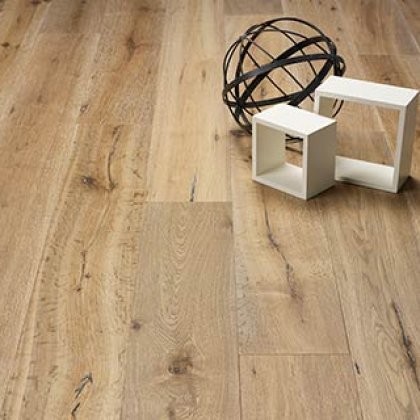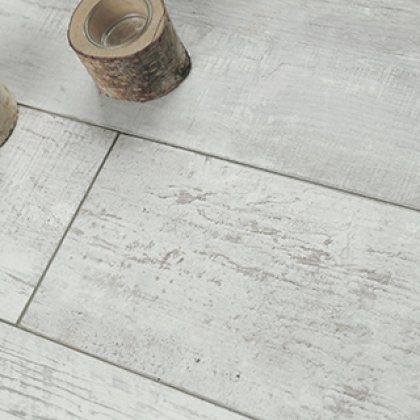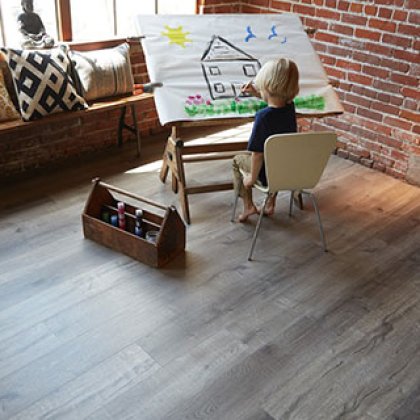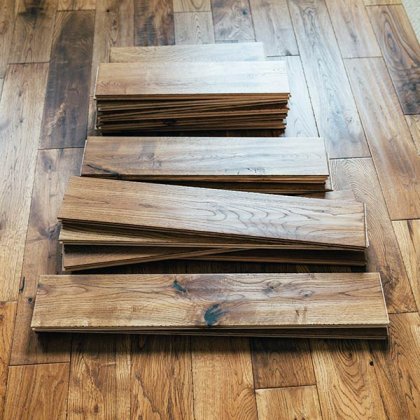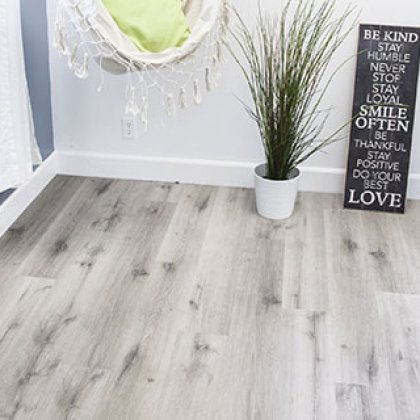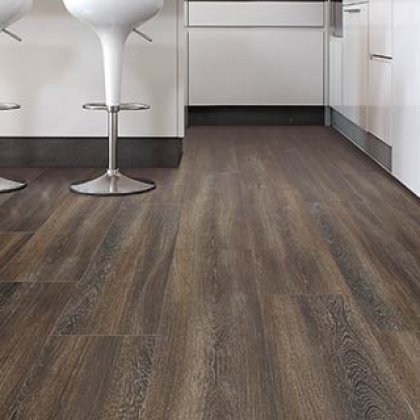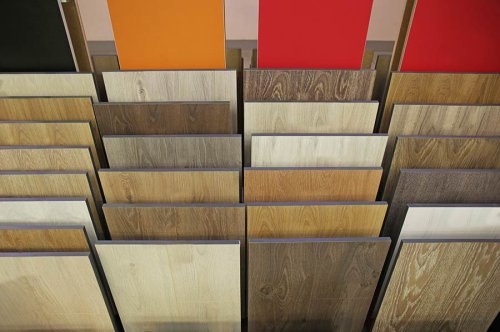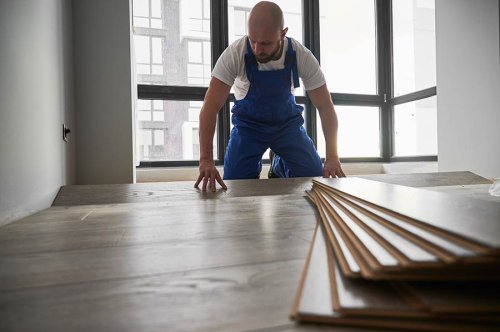Beginner's Blueprint: Master the Art of Laminate Flooring Installation
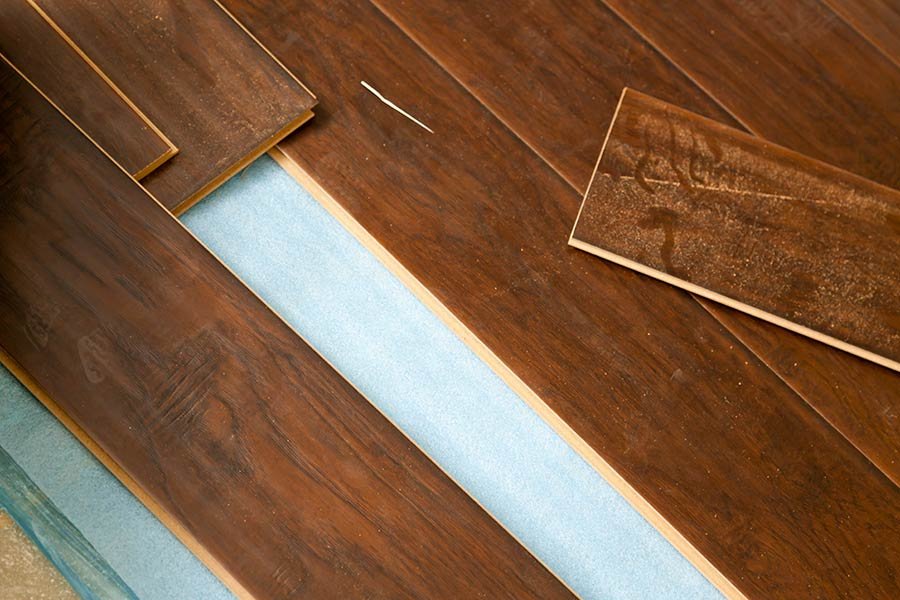
Are you ready to transform the look of your home with new, beautiful floors? Installing laminate flooring is a great way to achieve a stylish and durable flooring solution. Whether you're a complete beginner or have some DIY experience, this step-by-step guide will walk you through the process of installing laminate flooring, ensuring professional results that will enhance the beauty and functionality of your space.
In this comprehensive guide, we'll provide you with expert tips and advice to help you navigate each stage of the installation process with confidence. From selecting the perfect laminate flooring to preparing your space, gathering the necessary tools and materials, and mastering the installation technique, we've got you covered.
So, if you're ready to learn how to install laminate flooring for beginners and gain valuable laminate flooring installation tips, let's get started on your exciting flooring project!
Key Takeaways:
- Installing laminate flooring can be a great DIY project for beginners
- Proper preparation is crucial for a successful laminate flooring installation
- Choosing the right laminate flooring style and color is important for achieving your desired look
- Having the right tools and materials is essential for an efficient and hassle-free installation
- Following a step-by-step guide will help you achieve professional-looking results
Why Choose Laminate Flooring?
Before we dive into the installation process, let's take a moment to explore the benefits of laminate flooring. With its durable construction, versatile styles, and affordable price point, laminate flooring has become a popular choice among homeowners. Whether you're a beginner or an experienced DIY enthusiast, laminate flooring offers a range of advantages that make it an excellent option for any home.
Durable and Long-lasting:
The durability of laminate flooring is one of its standout features. With its strong core and wear-resistant surface, laminate flooring can withstand everyday wear and tear, making it an ideal choice for high-traffic areas in your home. Its resistance to scratches, stains, and fading ensures that your floors will maintain their beautiful appearance for years to come.
Wide Range of Styles:
Laminate flooring comes in a wide variety of styles, allowing you to find the perfect match for your home's aesthetics. From realistic wood and stone textures to bold patterns and vibrant colors, there's something to suit every design preference. With laminate flooring, you can achieve the look and feel of natural materials without the high cost and maintenance associated with them.
Affordable and Budget-friendly:
Compared to other flooring options, laminate flooring offers exceptional value for your money. Its affordable price point makes it a budget-friendly choice for homeowners looking to update their floors without breaking the bank. Additionally, the ease of installation that laminate flooring provides can help save on professional installation costs, making it an even more cost-effective option.
By choosing laminate flooring, you're making a practical and stylish investment in your home. Its durability, wide range of styles, and affordability make it an excellent choice for any homeowner, whether you're a first-time DIYer or a seasoned pro.
Selecting the Perfect Laminate Flooring
Finding the right laminate flooring for your project is crucial. With a wide range of styles, colors, and textures available, it's important to choose a laminate that complements your home décor and meets your functional needs. In this section, we'll guide you through the process of selecting the perfect laminate flooring, ensuring that you make an informed decision that you'll be happy with for years to come.
Understanding Your Options
Before you begin shopping for laminate flooring, it's helpful to understand the different types available. Laminate flooring typically comes in three main styles:
- Wood-look Laminate: This style mimics the look of hardwood flooring, with various finishes, grain patterns, and plank widths to choose from. It's a popular option for those who love the warmth and elegance of wood but prefer the durability and affordability of laminate.
- Tile-look Laminate: If you prefer the look of ceramic or stone tiles, tile-look laminate is a great alternative. It comes in a variety of colors, sizes, and patterns, allowing you to achieve a stylish and modern look.
- Other Specialty Designs: Laminate flooring also offers unique designs, such as natural stone replicas or abstract patterns, for those looking to add a touch of creativity to their space.
Consider Your Home Décor
When selecting laminate flooring, it's important to consider your existing home décor. Take note of the colors and styles of your furniture, walls, and other elements in the room. Choose a laminate that complements these existing features to create a cohesive and visually appealing space.
Color and Texture Selection
The color and texture of laminate flooring can greatly impact the overall look and feel of your space. Lighter colors and smooth textures can make a room feel more spacious and airy, while darker colors and embossed textures can add warmth and richness.
Consider the amount of foot traffic in the room as well. Lighter colors and busier patterns tend to hide dust and scratches better, making them more suitable for high-traffic areas like hallways and living rooms.
Measuring Your Space
Before purchasing laminate flooring, it's crucial to measure your space accurately. This ensures that you buy the right amount of flooring and minimizes the chances of running out or having excessive waste.
To measure your space, follow these steps:
- Measure the length and width of the room in feet. If the room has irregular shapes or multiple sections, break it down into smaller, more manageable areas and measure each individually.
- Calculate the total square footage by multiplying the length and width measurements.
- Consider purchasing an additional 5% to 10% more flooring to account for waste, mistakes, and future repairs.
By accurately measuring your space, you can confidently purchase the correct amount of laminate flooring, ensuring a smooth and efficient installation process.
Preparing Your Space for Installation
Proper preparation is crucial when it comes to installing laminate flooring, as it sets the foundation for a successful and long-lasting installation. In this section, we'll walk you through the essential steps to prepare your space and ensure a seamless and professional result.
Evaluating the Subfloor
Before you begin, it's essential to assess the condition of your subfloor. Ensure that it is clean, dry, and free from any imperfections that could affect the installation. Take note of any unevenness or damage that needs to be addressed.
Removing Existing Flooring
If you have existing flooring, you'll need to remove it before installing laminate flooring. This includes carpet, vinyl, or any other type of flooring that may be present. Carefully remove all baseboards, trim, and transition pieces that may interfere with the installation process.
Solving Potential Issues
During the preparation stage, it's important to address any potential issues that may arise and impact the outcome of your laminate flooring installation. This includes dealing with moisture, cracks, or unevenness in the subfloor. Taking the time to tackle these issues beforehand will ensure a smooth and level surface for your new flooring.
Installing Underlayment
After preparing the subfloor, it's time to install the underlayment. This layer acts as a moisture barrier and provides cushioning for the laminate flooring. Follow the manufacturer's instructions and use the recommended type and thickness of underlayment for your specific laminate flooring.
Summary
Properly preparing your space for laminate flooring installation is essential for achieving a professional and durable result. By evaluating the subfloor, removing existing flooring, addressing potential issues, and installing the appropriate underlayment, you'll create the perfect foundation for an easy and successful installation process.
| Preparation Steps | Description |
|---|---|
| Evaluate the Subfloor | Assess the condition of the subfloor and address any unevenness or damage. |
| Remove Existing Flooring | Thoroughly remove any existing flooring, including baseboards, trim, and transition pieces. |
| Solve Potential Issues | Address moisture, cracks, or unevenness in the subfloor before installation. |
| Install Underlayment | Follow manufacturer's instructions to install the appropriate underlayment for your laminate flooring. |
Gathering the Necessary Tools and Materials
Before you embark on your DIY laminate flooring project, it's important to gather all the necessary tools and materials. Having the right equipment at hand will ensure a smooth and efficient installation process, saving you time and frustration along the way.
Below, you'll find a comprehensive list of the tools and materials you'll need:
| Tools | Materials |
|---|---|
|
|
With these tools and materials readily available, you'll be well-prepared to tackle your DIY laminate flooring installation. Remember to wear proper safety gear, such as gloves and safety goggles, while working with tools and materials.
Pro Tip: Investing in high-quality tools and materials will ensure a better end result and longer-lasting floors. Don't skimp on the essentials!
Now that you have everything you need, it's time to move on to the next section, where we'll guide you through the step-by-step installation process.
Step-by-Step Installation Guide for Laminate Flooring
Ready to transform your space with beautiful laminate flooring? Follow our step-by-step guide to achieve professional results in no time. We'll break down the installation process into easy-to-follow instructions, ensuring a seamless experience from start to finish.
Laying the Underlayment
The first step in installing laminate flooring is to lay the underlayment, which helps reduce noise and provides a barrier against moisture. Start by cleaning the subfloor to remove any dirt or debris. Then, roll out the underlayment across the entire area, ensuring it overlaps at the seams by approximately 8 inches. Trim any excess underlayment using a utility knife.
Measuring and Cutting the Planks
Before installing the planks, it's important to measure and cut them to fit your space accurately. Start by measuring the length and width of the room, accounting for any irregularities or additional areas such as closets. Use a miter or circular saw to cut the planks to the desired size, leaving a small gap of approximately 1/4 inch along the walls to allow for expansion.
Installing the First Row
Begin the installation process by laying the first row of planks along the longest wall in the room. Make sure to place spacers between the planks and the wall to maintain the necessary gap for expansion. Use a tapping block and a rubber mallet to secure the planks together, ensuring a tight fit. Repeat this process for the entire first row.
Continuing the Installation
Once the first row is securely in place, continue installing the remaining rows by interlocking the planks together at an angle. Use the tapping block and rubber mallet to ensure a snug fit and avoid any gaps between the planks. Remember to stagger the seams between rows to create a visually appealing pattern.
Finishing Touches and Final Inspection
As you approach the final row, you may need to trim the planks to fit within the remaining space. Use a pull bar and hammer to gently tighten the planks. Once all the planks are installed, remove the spacers and install the baseboards or trim to cover the expansion gap. Take a moment to inspect the entire floor for any loose or uneven planks, ensuring a flawless finish.
Your stunning new laminate flooring is now complete! Sit back, relax, and enjoy your transformed space.
| Tools Required | Materials Needed |
|---|---|
|
|
Dealing with Tricky Situations and Common Challenges
Installing laminate flooring can sometimes pose challenges, especially when dealing with unique layouts or obstacles in your space. However, with our expert tips and solutions, you'll be able to navigate these tricky situations with confidence and ease. Here are some common difficult scenarios that arise during laminate flooring installation and how to overcome them:
Doorways
When installing laminate flooring near a doorway, you may encounter issues with transitioning the flooring between rooms. One solution is to use a T-molding, which provides a smooth transition between two flooring surfaces and allows for expansion and contraction. Measure the height of the flooring and door casing to determine the appropriate size of T-molding to use. Install the T-molding according to the manufacturer's instructions, ensuring a seamless transition.
Corners
Installing laminate flooring in corners can be tricky, but it is manageable with careful planning. Measure the area where the flooring will meet in the corner, making sure to leave a small gap for expansion. Use a coping saw to cut the planks at the correct angle to fit snugly against each other. This technique will ensure a seamless and professional-looking corner installation.
Uneven Walls
Uneven walls can pose a challenge when trying to achieve a tight and consistent laminate flooring installation. In these situations, it is important to use a scribe tool to trace the contours of the wall onto the laminate plank. Carefully cut along the traced line to create a custom-fit plank that perfectly matches the uneven wall. This technique will help you achieve a clean and polished look while accommodating any irregularities in your walls.
By following these tips and solutions, you'll be able to tackle any tricky situations or common challenges that may arise during laminate flooring installation. With patience and attention to detail, you'll achieve a professional-looking result in your home.
Properly Caring for Your Laminate Floors
Once your laminate flooring is installed, it's important to understand how to properly care for and maintain it. With the right care, your new floors will stay beautiful and durable for years to come. Follow these best practices to keep your laminate flooring in pristine condition:
- Regular Cleaning: Sweep or vacuum your laminate floors regularly to remove dirt, dust, and debris. Use a soft-bristle broom or a vacuum with a floor brush attachment to avoid scratching the surface. Avoid using excessive water or harsh cleaning solutions, as these can damage the laminate.
- Gentle Mopping: For a deeper clean, use a damp mop or microfiber cloth with a mild laminate floor cleaner. Avoid using excess water to prevent moisture from seeping into the seams or edges of the laminate planks. After mopping, dry the floor thoroughly with a clean, dry cloth.
- Protective Measures: Place doormats at entryways to prevent dirt and grit from being tracked onto the laminate flooring. Use furniture pads under the legs of chairs, tables, and other heavy furniture to prevent scratches. Avoid dragging heavy objects across the floor to prevent damage.
- Avoid Excessive Moisture: Laminate flooring is not waterproof, so be cautious of excessive moisture. Wipe up spills immediately with a clean, dry cloth to prevent water from penetrating the laminate's surface. Avoid wet mopping or steam cleaning, as these can cause swelling or warping of the planks.
- Preventative Measures: Use rugs or mats in high-traffic areas or areas prone to spills to provide an extra layer of protection. Trim your pet's nails regularly to prevent scratches. Place felt pads under the legs of furniture to prevent indentation marks.
By following these care tips, you can ensure that your laminate floors remain looking their best for many years. With the proper maintenance, your laminate flooring will continue to enhance the beauty of your space and provide a durable surface for your everyday activities.
Enhancing the Look of Your Laminate Floors
When it comes to laminate flooring, the installation process is just the beginning. To truly elevate the aesthetics of your newly installed laminate floors, there are a few additional steps you can take. From adding baseboards and trim to exploring options for transitions and staircases, these finishing touches can make a significant difference in the overall look and feel of your space.
Emphasizing with Baseboards and Trim
Baseboards and trim are not only functional, but they also add a polished, finished look to your laminate flooring. Choose baseboards that complement the style and color of your laminate planks. Whether you prefer a classic or contemporary aesthetic, there are a variety of materials and designs to choose from. Installing trim around doorways and windows can also provide a cohesive and professional appearance.
Creating Smooth Transitions
Transitions play an important role in the flow and visual continuity between rooms with different flooring materials. Whether you have carpet, tile, or hardwood adjacent to your laminate floors, there are transition pieces available to create a seamless connection. From T-molding to reducer strips, these transition accessories not only enhance the look of your floors but also provide a safe and smooth surface to walk on.
Staircase Makeover
If you have stairs in your home, extending your laminate flooring to cover them can create a unified and cohesive look. Laminate stair treads and risers are specifically designed to withstand heavy foot traffic while complementing the rest of your flooring. With a wide range of styles and colors available, you can easily transform your staircase into a stunning focal point.
Remember, when making any modifications to your laminate flooring, always follow manufacturer guidelines and seek professional assistance if needed. Proper installation and adherence to safety practices are crucial to achieving the desired results.
Enhancing the Look of Your Laminate Floors
| Enhancement Method | Description |
|---|---|
| Add Baseboards and Trim | Install baseboards and trim that complement your laminate flooring, providing a polished and finished look. |
| Create Smooth Transitions | Use transition pieces to seamlessly connect your laminate floors with other flooring materials in adjacent rooms. |
| Staircase Makeover | Extend your laminate flooring to cover your staircase using specially designed treads and risers. |
By incorporating these enhancements into your laminate flooring installation, you'll be able to create a space that is not only visually stunning but also reflects your personal style and attention to detail.
Exploring Advanced Techniques and Design Tips
If you've mastered the basics of laminate flooring installation and are looking to take your skills to the next level, this section is for you. Here, we'll delve into advanced techniques and design tips that will allow you to showcase your personal style and creativity.
Create Intricate Patterns
One way to elevate the look of your laminate floors is by creating intricate patterns. Whether you're going for a timeless herringbone design or a modern chevron pattern, there are various ways to add visual interest to your flooring. Start by carefully planning your layout and then follow the manufacturer's instructions on how to cut and install the laminate planks to create your desired pattern.
Incorporate Different Flooring Styles
If you want to make a bold statement with your laminate floors, consider incorporating different flooring styles into your design. Mixing laminate planks with tiles, hardwood, or even carpet can create a stunning and unique look in your space. Just make sure to choose complementary materials and plan the transition areas carefully to ensure a seamless and visually appealing result.
Embrace Unique Installation Methods
Another way to showcase your creativity is by embracing unique installation methods. Instead of sticking to the traditional horizontal or vertical installation, consider installing your laminate planks diagonally or in a custom pattern. This can add visual interest and make your floors a focal point in the room. Experiment with different layouts and consult with experts or online resources for inspiration and guidance.
"By incorporating intricate patterns and different flooring styles, you can transform your laminate floors into a work of art that reflects your personal style and adds a touch of uniqueness to your space."
As you explore these advanced techniques and design tips, remember to take your time and ensure proper measurement and planning before starting the installation process. By following these expert suggestions, you'll be able to elevate your laminate flooring installation and create a visually stunning result that exceeds your expectations.
Conclusion
Congratulations on becoming a laminate flooring installation expert! Armed with the valuable tips and guidance provided throughout this article, you now possess the knowledge and skills to confidently take on your own DIY project. Remember, following the manufacturer's guidelines and taking your time during each step of the process is essential for achieving exceptional results.
Installing laminate flooring requires precision and attention to detail. From preparing the space and gathering the necessary tools to laying the planks and addressing tricky situations, we have covered it all. By implementing the techniques and strategies outlined, you can create stunning, professional-looking laminate floors that transform the aesthetic appeal of your home.
As you enjoy your newly installed laminate floors, it's important to care for them properly to maintain their beauty and longevity. Regular cleaning and preventative measures will help keep your floors looking pristine. Additionally, consider exploring options for enhancing the visual impact of your laminate floors, such as adding baseboards and trim or incorporating creative design elements.
Now that you have the knowledge and the confidence, it's time to embark on your laminate flooring installation journey. Good luck, and may your home be enriched with the beauty and functionality that only laminate floors can provide!
FAQ
How do I install laminate flooring as a beginner?
Installing laminate flooring as a beginner is easier than you might think. Follow our step-by-step guide, gather the necessary tools and materials, and take your time during each stage of the process. Remember to properly prepare your space and address any potential issues beforehand. With our expert tips and guidance, you'll be able to achieve professional-looking results.
Why should I choose laminate flooring?
Laminate flooring offers a range of benefits that make it an excellent choice for both beginners and experienced DIY enthusiasts. It's durable, affordable, and comes in a wide variety of styles and designs. Laminate flooring is also relatively easy to install and maintain. Whether you're looking for a budget-friendly option or want to replicate the look of hardwood or tile, laminate flooring is a great choice for your home.
How do I select the perfect laminate flooring for my project?
Selecting the right laminate flooring for your project is crucial. Consider factors such as style, color, and texture that complement your home décor. It's important to choose a type of laminate that suits your lifestyle and preferences. Measure your space accurately to determine how much flooring you'll need. By carefully considering these factors, you'll be able to find the perfect laminate flooring for your project.
How do I prepare my space for laminate flooring installation?
Properly preparing your space is essential to ensure a successful laminate flooring installation. Start by preparing the subfloor and removing any existing flooring. Address any potential issues, such as uneven surfaces or moisture problems, before installing the laminate flooring. By taking the time to prepare your space, you'll create a smooth and level surface for your new laminate flooring.
What tools and materials do I need to install laminate flooring?
To install laminate flooring, you'll need a specific set of tools and materials. This includes basic hand tools such as a tape measure, hammer, and utility knife, as well as specialized tools like a laminate flooring cutter and an installation kit. Additionally, you'll need the laminate flooring planks, underlayment, and any necessary accessories. Gathering all the necessary tools and materials before starting will make the installation process much smoother.
Can you guide me through the step-by-step installation process for laminate flooring?
Certainly! Our detailed step-by-step installation guide will walk you through each stage of installing laminate flooring. From preparing the subfloor and laying the underlayment to cutting and installing the laminate planks, we'll provide you with easy-to-follow instructions to ensure a seamless installation. Whether you're a beginner or have some DIY experience, our guide will help you achieve professional-looking results.
What should I do if I encounter tricky situations or challenges during the installation?
Installing laminate flooring may present some challenges, such as dealing with doorways, corners, or uneven walls. We've got you covered! Our guide includes expert tips and solutions to address common difficult situations. Learn how to overcome these obstacles and navigate any challenges that may arise during the installation process. With our troubleshooting advice, you'll be able to tackle even the trickiest situations with confidence.
How do I properly care for my laminate floors?
Once your laminate flooring is installed, it's important to know how to properly care for and maintain it. We'll discuss best practices for cleaning, preventing damage, and extending the lifespan of your laminate floors. Following these care tips will keep your floors looking beautiful and ensure their durability over time. Take the necessary steps to protect your investment and enjoy your laminate floors for years to come.
Are there ways to enhance the look of my laminate floors?
Absolutely! Beyond installation and maintenance, there are additional ways to enhance the look of your laminate floors. We'll provide creative ideas and guidance on how to add baseboards and trim, explore options for transitions between different flooring areas, and even cover staircases with laminate flooring. These simple additions and design choices can elevate the aesthetics of your space and create a cohesive look throughout your home.
Are there advanced techniques and design tips for laminate flooring installation?
For those looking to take their laminate flooring installation to the next level, we'll delve into advanced techniques and design tips. Learn how to create intricate patterns, incorporate different flooring styles, and embrace unique installation methods to showcase your personal style and creativity. While these techniques may require a bit more experience and confidence, they can truly transform your space and make a statement with your laminate floors.





